Alias Jesse James

Brief Synopsis
Cast & Crew
Norman Z. Mcleod
Bob Hope
Rhonda Fleming
Wendell Corey
Gloria Talbot
Jim Davis
Film Details
Technical Specs

Synopsis
In late 1880s New York, insurance agent Milford Farnsworth is fired from the Plymouth Rock Insurance Company by his boss, Titus Queasley, for his failure to sell even a single policy over several months. Undaunted, Milford goes to a nearby saloon, where he attempts to sell life insurance to the bartender. Milford's pitch is overheard by notorious train robber Jesse James, who asks to buy a $100,000 policy naming his fiancée, saloon singer Cora Lee Collins of Angels Rest, Missouri, as his beneficiary. Delighted when Jesse pays his premium in full, Milford returns to Queasley, who is stunned by the sale. When Queasley realizes the identity of Milford's customer, however, he gives the hapless agent an ultimatum: either follow Jesse to Missouri in order to buy back the policy or become the robber's permanent bodyguard. That evening, Milford's train is held up by Jesse and his gang and they steal the refund money from Milford. Upon arriving in Angels Rest, Milford wires Queasley to send more money, unaware that the telegraph operator shows Jesse all wires. Spotting a poster advertising Cora Lee's act at the saloon, Milford looks for her there, but is sidetracked by members of Jesse's gang, who have been warned by the telegraph operator of the insurance agent's identity. Forced to strip down to his underwear while playing poker with the gang, Milford flees unharmed and takes refuge unknowingly in Cora Lee's room. Discovered by the sheriff, Milford is escorted back to the station and placed on the next train. Meanwhile, Jesse decides to make sure that Milford remains in town until he receives the money from Queasley, so, with his brother Frank, holds up the train to bring Milford back to Angels Rest. Milford is touched by Jesse's invitation to stay with him at his ranch and join in the celebration of his wedding to Cora Lee the next day. At an evening party at the ranch, Cora Lee is taken by Milford's guilelessness and is awed when he saves her from a Gila monster. After the party, Milford is dismayed to learn from Jesse's mother Ma that Jesse has scheduled a gunfight for the following morning. Determined to protect Jesse, Milford decides to steal the cowboy's clothes and impersonate him. At dawn, Milford rides into town where he confronts Jesse's adversary, Snake. Having previously wired his pistols to his hat, Milford pretends to surrender, but upon raising his hands, lifts his hat, firing the guns and wounding Snake. Upon discovering Milford's identity, the townspeople and Cora Lee are impressed by his bravery and gunslinging talents. Milford then visits Cora Lee in her hotel room and confesses why he must protect Jesse. Amazed to learn that she is Jesse's insurance beneficiary, Cora Lee reveals that she has never returned Jesse's affections and admits her attraction to Milford. When Jesse rides into town in search of Milford, the telegraph operator gives him a wire from Queasley to Milford. Outraged that Milford has lost the premium pay-back money, Queasley fires Milford again and announces that he is bringing the money personally. Upon seeing Milford dressed in his clothes, Jesse realizes that he should allow Milford to continue impersonating him and then arrange for his death so that Cora Lee and he can collect the insurance. After Jesse convinces Milford to continue impersonating him to insure his safety, Milford joins the gang that night for a train robbery in which Queasley is robbed of the pay-back money. Jesse and Frank attempt to shoot Milford during the train escape, but he is unhurt. During the ride back to the ranch, however, the James brothers shoot Milford in the back and are relieved when he falls from his horse in the forest. Cora Lee is heartsick over Milford's apparent death when Jesse returns and confesses his plan for collecting the insurance money. Both are amazed, however, when a short time later, Milford rides in on a cow, having wisely worn a metal vest as protection during the train robbery. Arriving at Angels Rest, Queasley immediately becomes suspicious of the telegraph operator and asks the conductor to send a wire from the next town asking all law officers to come to Angels Rest to capture the James gang. The next morning, Jesse asks Milford to go into town, then sends two gang members after him. Having overheard Jesse's orders, Cora Lee then sends her friend, Indian princess Awani, to warn Milford. Awani saves Milford from the ambush and acknowledges that Cora Lee sent her because she loves him. When Awani reminds Milford that Jesse intends to marry Cora Lee later that day, Milford vows to intervene. On their journey back, Milford and Awani run into the justice of the peace headed to the wedding and Milford overpowers the man and takes his clothes. Wearing a beard made from a horse's tail, Milford is not recognized when he arrives at the James' ranch posing as the justice of the peace. After asking the men to remove their guns, Milford proposes a toast using punch in which he has put hallucinatory mushrooms and the men fall into a daze. Milford's beard falls off, however, and the men recognize him as he flees with Cora Lee. Ma rouses the men with strong coffee and they chase Milford and Cora Lee into town where Milford determines to make a stand. Unknown to him, the town is filled with lawmen who have come in answer to Queasley's wire. Queasley shows up just as the James gang confronts Milford and Cora Lee in the middle of town. Queasley faints from fear, but Milford valiantly shoots it out, unaware that the lawmen are protecting him. When the gang is decimated, Jesse and Frank surrender to the local sheriff and Milford is proclaimed a hero. Years later, Milford has risen to the presidency of Plymouth Rock Insurance Company and he and Cora Lee are the happy parents of half a dozen children.

Director

Norman Z. Mcleod
Cast

Bob Hope
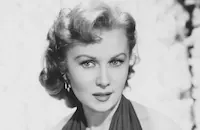
Rhonda Fleming

Wendell Corey
Gloria Talbot

Jim Davis

Will Wright
Mary Young
Mickey Finn
Bob Gunderson
Fred Kohler
Ethan Laidlaw

Glenn Strange

Mike Mazurki
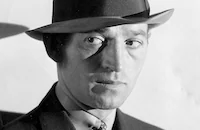
George E. Stone
Hugh O'brian

Ward Bond
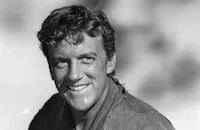
James Arness
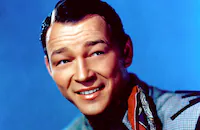
Roy Rogers

James Garner
Fess Parker
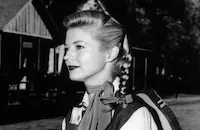
Gail Davis

Gary Cooper
Jay Silverheels

Bing Crosby
Oliver Blake

Wally Brown

James Burke

Scatman Crothers
I. Stanford Jolley

Nestor Paiva
Emory Parnell
Harry Tyler
Joseph Vitale

Sid Melton
Crew
Arthur Altman
Roland Anderson
Jack Bachom
Daniel D. Beauchamp
William Bowers
Bud Burtson
Marvin J. Coil
Sam Comer
By Dunham
Farciot Edouart
Lyle Figland
John P. Fulton
Bertram Granger
Charles Grenzbach
Edith Head
Joe Hooven
Marilyn Hooven
Bob Hope
Jack Hope
Wallace Kelley
Bert Lawrence
Joseph J. Lilley
Lionel Lindon
Nelly Manley
Daniel Mccauley
Kent Mcgray
William Morley
Hal Pereira
Robert St. Aubrey
William Watson
Wally Westmore

Videos
Movie Clip



Trailer
Film Details
Technical Specs

Articles
Alias Jesse James
Although his show was not on the air at the time Alias Jesse James was released, Roy Rogers and his horse Trigger also pop up in the movie. Rogers was not only one of the most popular Western heroes of all time, but he had also played an important role alongside Hope in Son of Paleface. In fact, that had been his last movie role before devoting himself exclusively to his television career. The Roy Rogers Show ran from 1951 to 1957. He and his wife, Dale Evans, also returned briefly as co-hosts of The Roy Rogers Show, a Western-themed variety show in 1961-62. Roy made only one more feature film after Alias Jesse James, the contemporary Western Mackintosh and T.J. (1975).
In Alias Jesse James, Hope (who was also the executive producer) plays bumbling insurance agent Milford Farnsworth, who is sent to buy back a policy from high-risk client Jesse James. This inspires a scheme on James's part to have Farnsworth mistaken for him and killed so that the real Jesse can collect the insurance settlement. It's the usual Hope set-up of cowardly "hero" bumbling his way through a number of perils and into the arms of a beautiful woman, in this case Rhonda Fleming. As usual, it was a winning formula for his audiences.
The outlaw is played by veteran actor Wendell Corey, who had done solid work in almost every genre, including a turn as Jesse's brother Frank in The Great Missouri Raid (1951). Audiences will recognize him as James Stewart's detective pal in Hitchcock's Rear Window (1954). His last screen appearance was in a fairly obscure Western, Buckskin (1968).
The filming of Alias Jesse James wasn't necessarily the easiest or most pleasant for Hope. While working on it, he had to put one of his companies, Hope Metal Products of Cleveland, into bankruptcy after entrusting its management to his older brother Ivor. Not only was it a significant financial loss for the money-conscious star but also strained his family relationships. In his mid-50s at this point, Hope also experienced some physical difficulties. The final scene to be filmed was a shot that required him to run on a treadmill in front of a rear projection. He suddenly passed out and had to be taken to the emergency room. He recovered after a period of rest, but co-star Jim Davis (he later gained fame as patriarch Jock Ewing on Dallas), noted that the relentlessly perfectionist Hope was pushing himself too hard throughout the production, doing too much strenuous activity for his age.
Helmed by veteran comedy director Norman Z. McLeod, who had directed three previous Hope pictures, Alias Jesse James features some funny cartoon-inspired sight gags. There is a scene in which Hope takes a shot of liquor that causes his hat to puff up and smoke to come out of his ears. The effect was achieved by running tubes up his back and into his hat releasing air into the costume prop and shooting streams of incense from just behind his ears.
Director: Norman Z. McLeod
Producers: Bob Hope, Jack Hope
Screenplay: William Bowers and Daniel B. Beauchamps, story by Robert St. Aubrey and Bert Lawrence
Cinematography: Lionel Lindon
Editing: Jack Bachom, Marvin Coil
Production Design: Roland Anderson, Hal Pereira
Original Music: William D. Dunham
Cast: Bob Hope (Milford Farnsworth), Rhonda Fleming (Cora Lee Collins), Wendell Corey (Jesse James), Gloria Talbott (Princess Irawanie), Jim Davis (Frank James).
C-92m.
by Rob Nixon

Alias Jesse James
Quotes
Trivia
Notes
Composer By Dunham's surname was misspelled in the credits as "Bunham." Although three songs are credited, only the title song and "Ain't-a-Hankerin'" were performed in the film. Hollywood Reporter news items note that portions of the film were shot at Iverson Ranch in Chatsworth, CA, as well as Alperson's Ranch and Yurage Ranch in Southern California.
The finale includes cameos by various well-known film and television cowboys who come to "Milford's" aid without his knowledge: Hugh O'Brian, who portrayed "Wyatt Earp" in The Life and Legend of Wyatt Earp, Ward Bond, who starred as "Major Seth Adams" in Wagon Train, James Arness, who was "Sheriff Matt Dillon" in Gunsmoke, Fess Parker, who starred in Walt Disney's Davy Crockett, Gail Davis, who was Annie Oakley, Jay Silverheels, who co-starred as "Tonto" in The Lone Ranger, Roy Rogers, who starred in cowboy films from the late 1930s and Gary Cooper, who appeared in cowboy films from the late 1920s.
Bing Crosby, Bob Hope's co-star in numerous "road" pictures throughout the 1940s, made the last cameo appearance in which, dressed as a sheriff, he fires the final shot that prevents "Jesse James" from shooting Milford. The Daily Variety lists James Garner in addition to the above cameo appearances, but he was not in the print viewed. Although a sequence featuring Gene Autry was originally shot, it was cut from the final film, according to the Autry estate. Although October 58 Hollywood Reporter news items add Joe Greene to the cast, he did not appear in the released film.

Miscellaneous Notes
Released in United States 1959
Gary Cooper, Gene Autry, Roy Rogers, and Bing Crosby make cameo appearances as themselves.
Released in United States 1959














